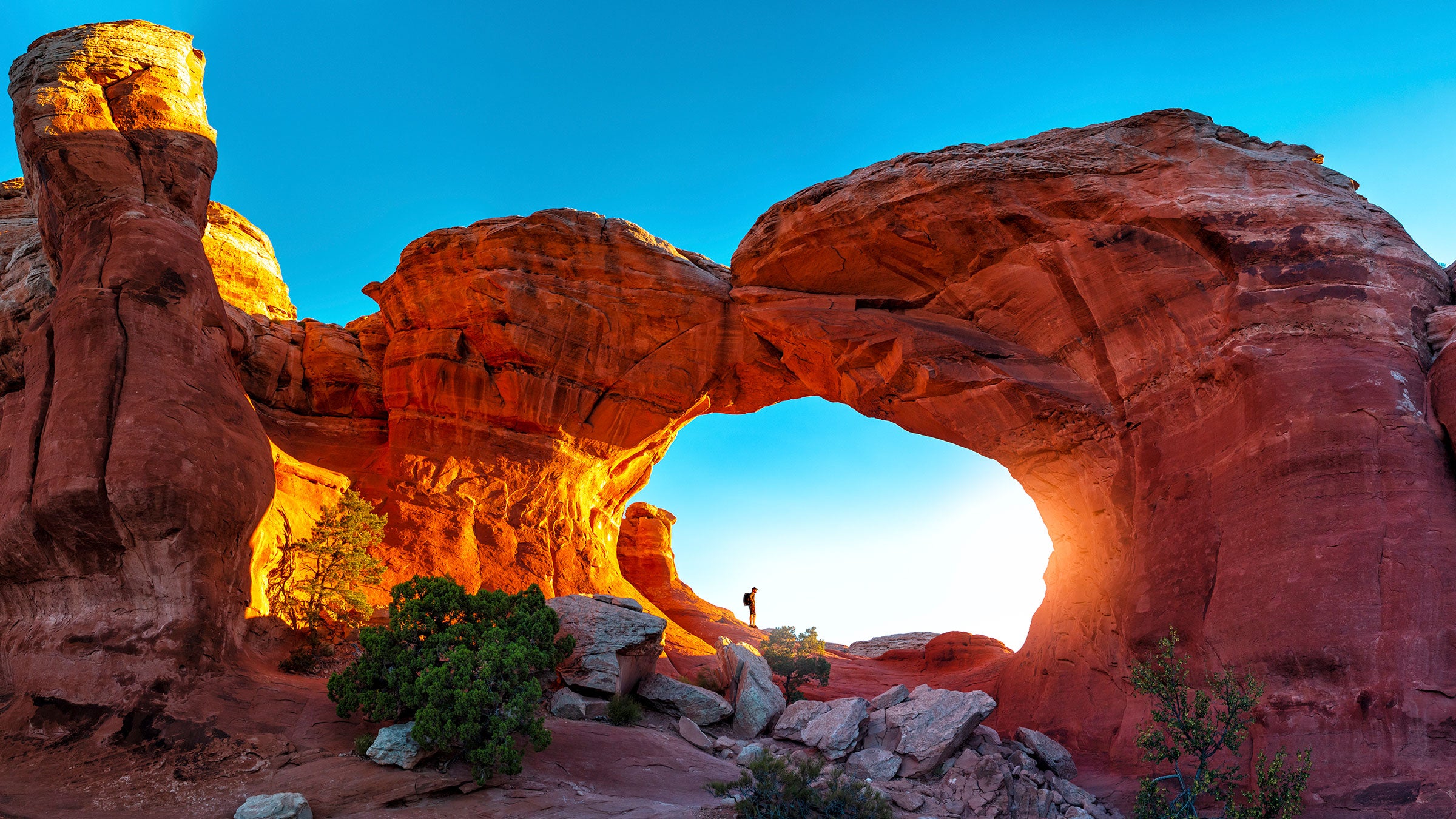Utah is stacked when it comes to outdoor adventure. Not only does the state have some of the country’s most badass skiing and mountain biking, but it also boasts the nation’s third most national parks in any state, which include some of the world’s best hiking trails.
These protected meccas—Arches, Bryce Canyon, Canyonlands, Capitol Reef, and Zion, known as the Mighty Five—capture unique and stunning landscapes that represent the desert at its absolute finest, from striking sandstone arches to isolated slot canyons to lush oases. And over the years, I’ve been fortunate enough to visit all of Utah’s national parks. Some, during my explorations as a nascent single dude traveling in a diesel VW Jetta with pink bumpers looking for adventure (true story), and others later in life with my wife and kids in tow.
Do I have a favorite? Absolutely. Arches. Wait, Bryce. Definitely Bryce. Or, actually Zion. Okay… truth be told, I can’t pick one. They’re all breathtaking for different reasons, and for me, that’s an impossible task.
I did however pick my two favorite hikes in each park—one for beginners and one for the more adventurous—that you absolutely can’t miss when you go. Especially if you’re a first-timer to Utah’s national parks, consider these hiking trails the ultimate primer. And if you keep coming back as I do, maybe you’ll discover which park you like best. (Good luck with that.)
If you buy through our links, we may earn an affiliate commission. This supports our mission to get more people active and outside. Learn more.
Destinations Newsletter
Want more of ���ϳԹ���’s Travel stories?Arches National Park
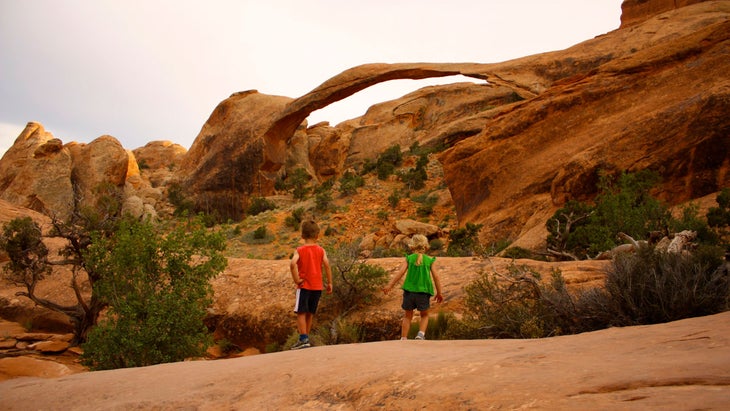
As the name suggests, Arches is loaded with more than 2,000 rainbow-like curved sandstone features within its borders—the highest concentration of such outcroppings in the United States. You’ll also find colorful cliffs, towering pinnacles, and balancing rocks that combine for a red rock landscape like no other.
Best Beginner Hike: Park Avenue
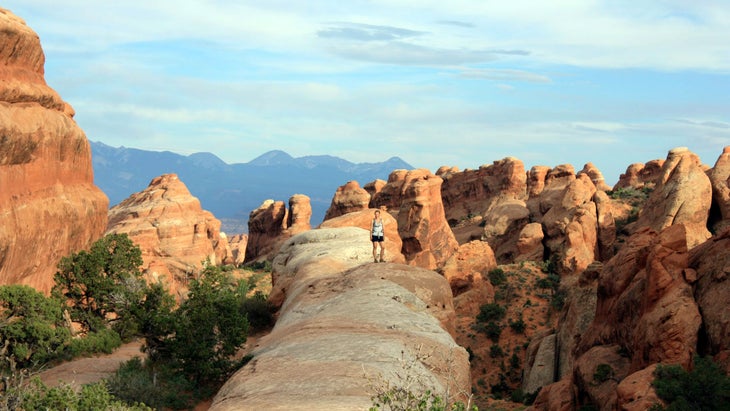
Yes, the national park is named Arches, but takes you through the center of towering cliffs and spires, so tall they’re reminiscent of New York City’s skyscrapers. It’s popular, and can get crowded, but it’s a must-do when you’re in Arches. The 2-mile out and back takes you through the middle of the park’s signature outcroppings, including Tower of Babel, a distinctive, freestanding fin that is part of the larger group of Courthouse Towers. (Some people shuttle themselves via two cars and make it a mile-long point to point.)
Best Advanced Hike: Primitive Loop Trail
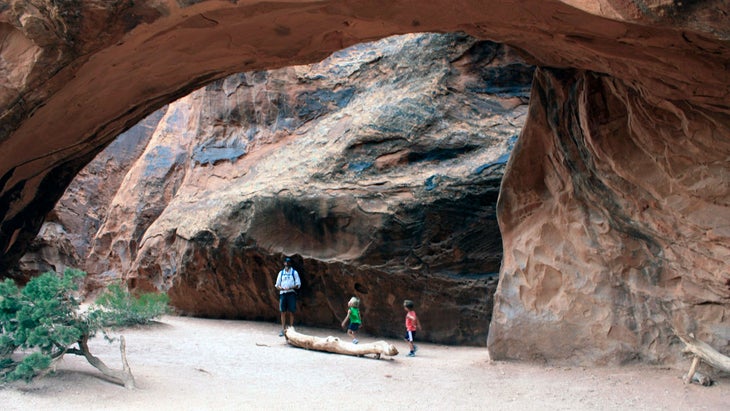
The 7.9-mile , the park’s longest maintained trail, accesses a handful of distinctive sandstone features in the Devil’s Garden area and delivers the desert solitude you probably crave after navigating crowds at the park’s entrance. Its landscape-to-arches bang for buck, combined with the opportunity to ditch the masses, make this my favorite trail inside the park. Spur trails lead to Landscape Arch, which at 306-feet across, makes it the longest stone arch in North America. You’ll also be able to see Double O Arch, Private Arch, and the weird Dark Angel, a black sandstone spike emerging from the sand.
Pro Tip: Arches now requires to enter the park (get them up to three months in advance) between April 1 and October 31. But show up after 4 P.M. and you can enter the park without advanced notice. Just bring a headlamp in case your hike goes longer than expected.
Canyonlands National Park
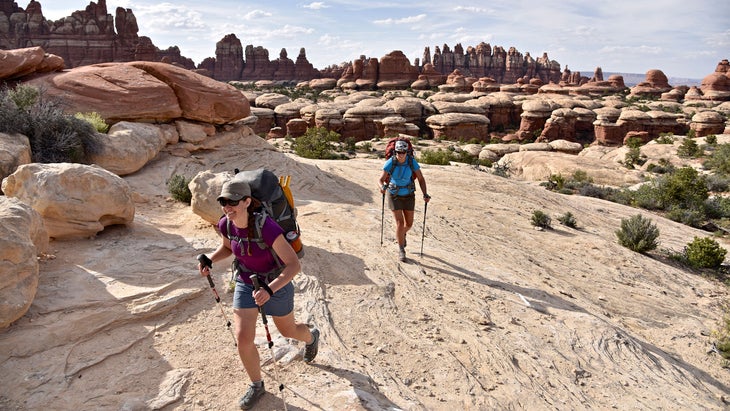
At 337,598 acres, Canyonlands is the largest national park in Utah, with three distinct regions; the day-hike-friendly Needles, Island in the Sky (which covers a plateau between the Colorado and Green Rivers), and the super remote Maze. The Needles has the most developed trails for hikers, as well as some of the park’s signature canyons and spires.
Best Beginner Hike: Mesa Arch
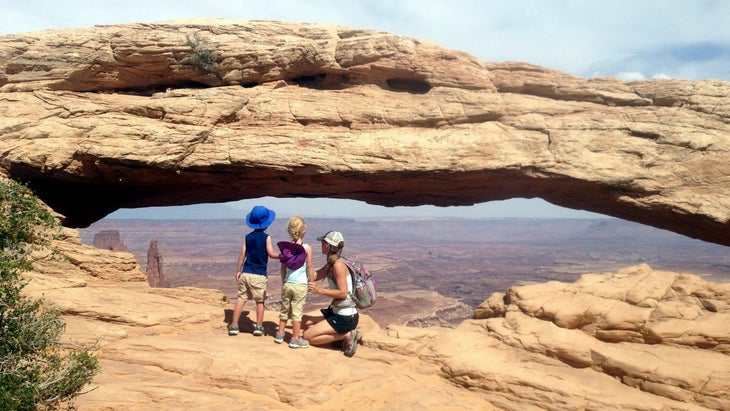
This .5-mile in the easy-to-access Island in the Sky District, delivers hikers to a 27-foot arch that’s perched on the edge of a cliff more than 1,000 feet above Buck Canyon. Peer through the arch and you can see some of Canyonland’s signature features, including the massive monoliths of Washer Woman and Monster Tower, as well as the La Sal Mountains beyond the park.
Best Advanced Hike: Chesler Park Loop
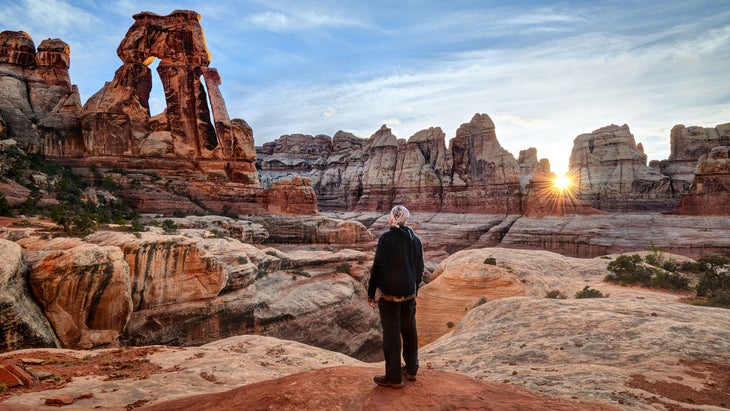
Hike some of the best scenery in The Needles District on this that delivers the slot canyons and arches most hikers come to the area to see. The tread is slickrock and sandy washes as you combine four trails (Elephant Hill, Druid Arch, Joint Trail, and Chesler Park), which will have you squeezing through boulders and scrambling through stone notches. Chesler Park itself is a circular valley surrounded by towering sandstone spires.
Pro Tips: First, try to time your visit to Mesa Arch for sunrise, when the red rock cliffs framed by the structure are set aglow by the emerging daylight. Second, there are no reliable water sources on the Chesler Loop hike, so make sure you bring plenty for a full day in the desert.
Bryce Canyon National Park
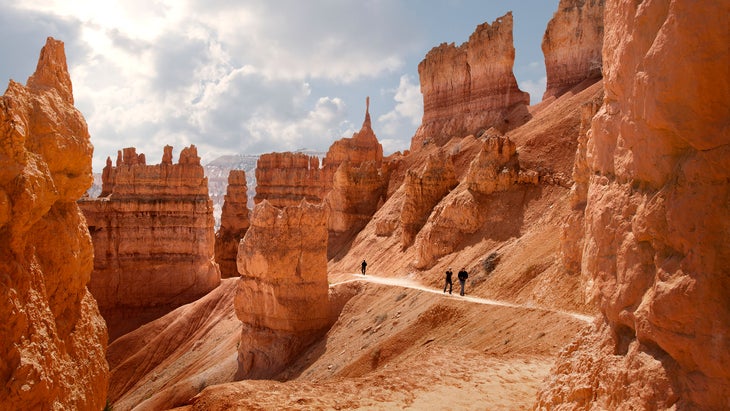
Hoodoos are a trip. These tall, stone spires look like huge versions of the drip castles you made as a kid on the beach, and Bryce Canyon National Park is full of them, as well as deep canyons, surprisingly lush forests, and elevations that top out at 9,100 feet.
Best Beginner Hike: The Rim Trail
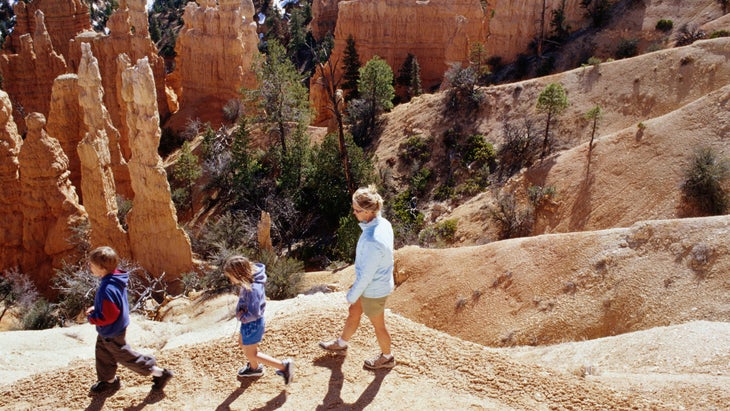
The traces the edge of Bryce Canyon for 5.5 miles, connecting two popular overlooks, Bryce Point and Fairyland Point. A run by the park service hits multiple overlooks and access points along the Rim Trail, making it easy to treat this as a point-to-point, and there are three overlooks and trailheads along the way, so you can tailor the distance to your own ability. Do the whole thing and you’ll only gain 200 feet of elevation, while the views into the canyon offer peeks of the park’s grandiose canyons and spires, including the appropriately-named Thor’s Hammer.
Best Advanced Hike: Under-the-Rim Trail
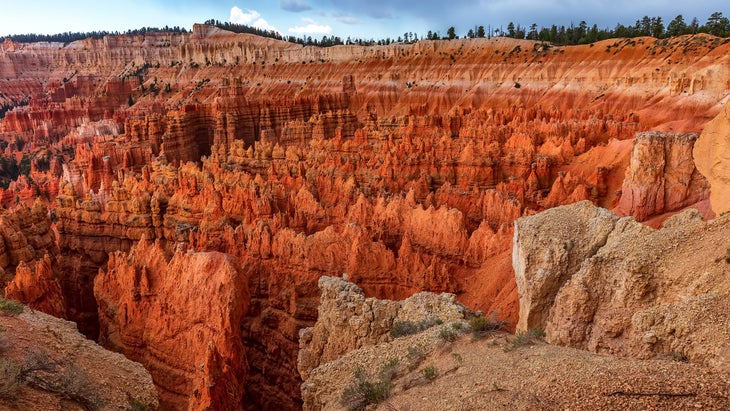
At 23 miles, you’ll need at least a couple of days to complete this point-to-point highlight reel of Bryce Canyon. But you’ll be glad you dedicated the extra time, as boasts serious backcountry goods, including views of towering orange cliffs, clusters of the park’s signature hoodoos, and even forests of ponderosa pines and aspens. It’s not an easy stroll as you’ll gain 5,500 feet along the way, but primitive backcountry campsites enable you to break it up into a multi-day effort.
Pro Tip: Bryce has a free park shuttle, but it doesn’t access Rainbow Point Trailhead, so you’ll need to hire a shuttle (, from $15 per person) or have two cars complete Under-the-Rim Trail, or if you’re planning to hike the entire Rim Trail.
Zion National Park
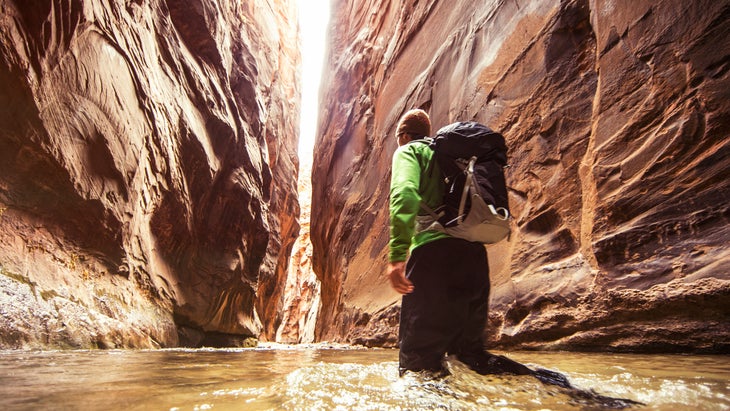
To say Zion protects a desert landscape would be too simple of a description. The 148,733-acre park actually encompasses an area where three distinct ecosystems, the Mojave Desert, the Colorado Plateau, and the Great Basin come together. The result is terrain that’s rich with canyons, lush river valleys, and soaring peaks. It’s also one of the most popular national parks in the entire country, with five million visitors last year.
Best Beginner Hike: Emerald Pools Trail
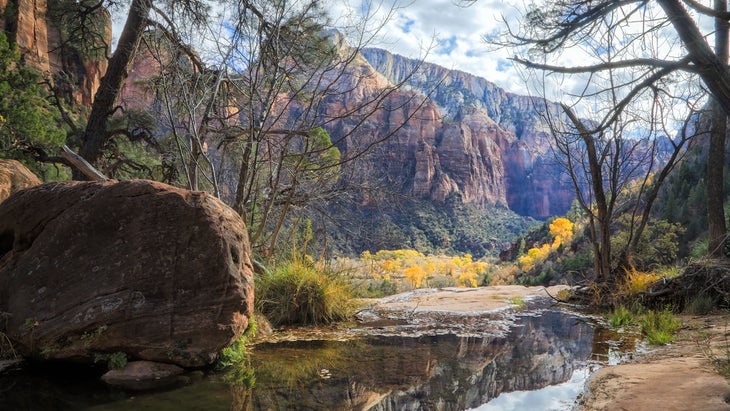
There are three Emerald Pools in Zion, each of which is an actual oasis in the middle of the desert, located on different tiers of a stream, tucked into the base of a massive, sandstone amphitheater. The Lower Emerald Pool, which is actually a couple of separate pools fed by a small waterfall that tumbles over an alcove, is wheelchair accessible via a 1.2-mile . The Middle and Upper Emerald Pools are a little tougher to reach; a 2.5-mile loop accesses all three, but Upper is worth the effort, as the pool sits at the base of a massive sandstone wall. Show up in spring and all of the pools could be fed by seasonal waterfalls.
Best Advanced Hike: Orderville Canyon
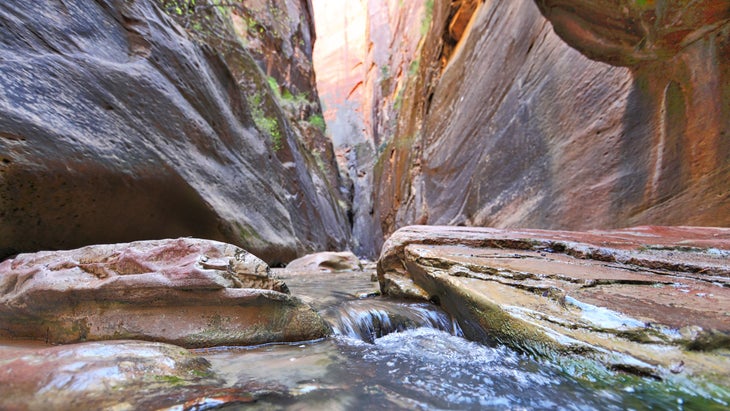
Yes, The Narrows is the park’s most lauded hike, but offers a similar experience over more technical terrain that keeps the masses away. The first few miles are easy going, but as you descend deeper into Orderville, the canyon narrows and becomes a tangle of boulders you have to climb and repel over, interspersed with springs and waterfalls. It’s a 12-mile point to point through a lush playground that should take a full day, and you will need technical skills and gear to tackle it safely. You’ll also need a ($10 per person). (If you’re not comfortable with canyoneering, hire a guide. Commercial guides can’t lead you through canyons inside the national park, but they can take you through similar canyons outside of the park’s boundaries.)
Pro Tip: Zion has a that begins at the Visitor Center and delivers you to popular trailheads, but you need to show up early to get a parking spot. During summer, the first shuttle leaves the Visitor Center at 6 A.M. Be on it.
Capitol Reef National Park
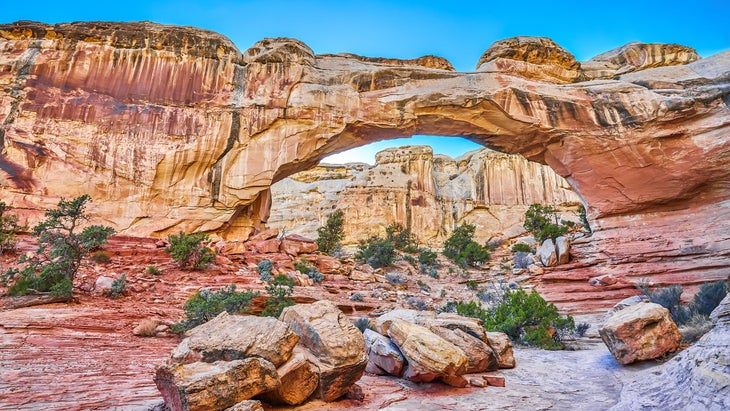
Natural arches and bridges, singular rock pillars, canyons… the 241,904-acre Capitol Reef is home to all of the highlights you’d expect from a national park in the desert of Utah. All of these features are a result of the Waterpocket Fold, a 100-mile long “wrinkle” in the earth’s crust made by an uplift of an underlying fault about 15 million years ago, which caused massive cliffs to rise and eventually erode into domes, towers, canyons, arches, and monoliths that are found throughout this park. Cool, right?
Best Beginner Hike: Grand Wash
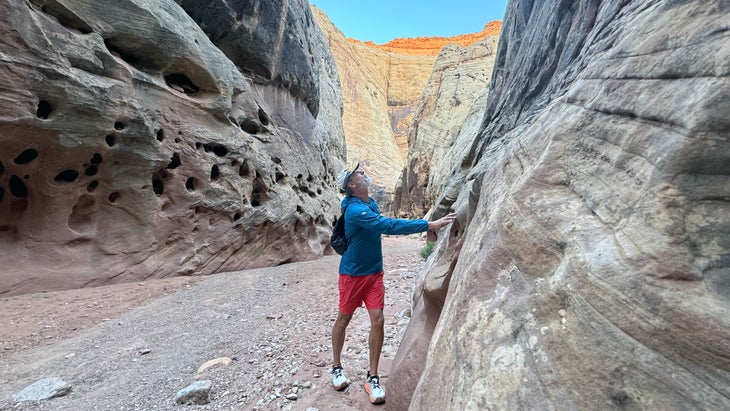
gives you a taste of the narrow canyons that people go ape over, but via a flat hike that’s easy to follow and super family friendly. The entire hike is a 4.4-mile out and back, but if you start on the Highway 24 trailhead, you enter the canyon early, with 200-foot vertical rock walls on either side of you, and can turn back when you’ve seen enough. After hiking a half mile over sandy terrain, the canyon begins to shrink and soon you’ll hit the narrows, which has slot canyon vibes without getting so tight it causes claustrophobia (the walls are about 20-feet apart at their slimmest point). The tan, sandstone walls are pockmarked with holes and small caves, and even offer shade in the morning and late afternoon.
Best Advanced Hike: Sheets Gulch Slot Canyon
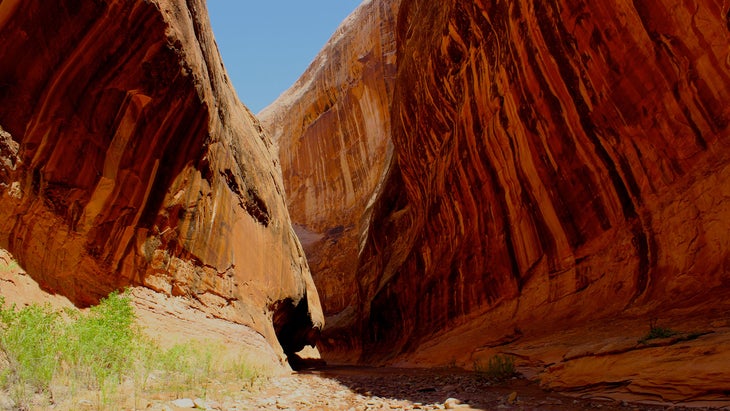
Capitol Reef has a bevy of canyons to explore, but might be the best non-technical option. There’s no official trail through the narrow gorge, which can be found 12.7 miles south of Highway 24 on the paved Notom-Bullfrog Road, but the occasional cairn and obvious route through narrow, sandstone walls make this journey relatively straightforward to navigate. (Bring a map, regardless.) While you won’t need ropes, you’ll need to muscle up and over several chockstones and wade through the occasional pool to keep moving forward, but that’s half the fun. It’s a 9-mile point to point, but most hikers turn around when the canyon begins to open back up, roughly 6.5 miles from the trailhead, making it a long, 13-mile all-day adventure.
Pro Tip: Bring a 4WD rig. The hikes I mention here are accessible via paved roads, but if you have a high clearance, 4WD vehicle, the entire backcountry of Capitol Reef becomes your oyster, and you’ll have options for free, primitive camping and an easier time getting into the remote Cathedral Valley—a backcountry district of the park where you can find a cluster of sandstone monoliths.
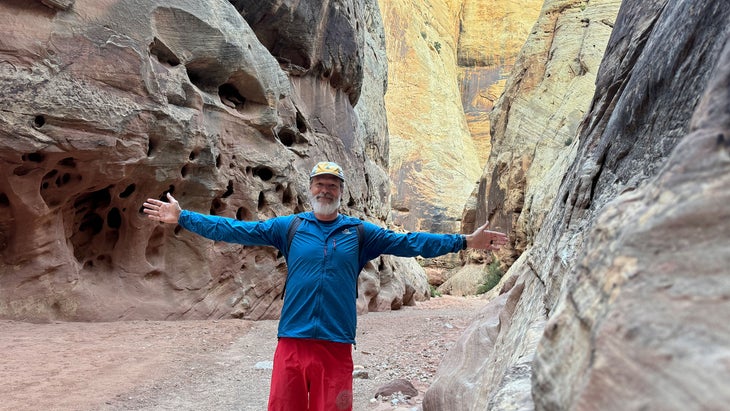
Graham Averill is ���ϳԹ��� magazine’s national parks columnist. He’s fresh off of a trip to Utah, where he was able to hike portions of Capitol Reef National Park and Grand Staircase-Escalante National Monument. He also just survived Hurricane Helene at his home in Asheville, North Carolina and wrote about it, and ranked the best national parks in the nation for fall foliage.


